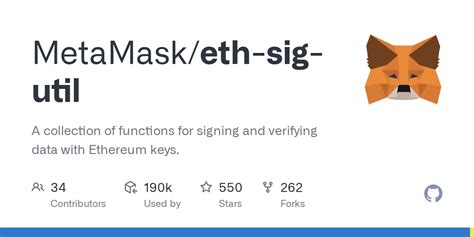Metamask: When to Prompt for Signing Message and How It Works
In recent years, cryptocurrency wallets like MetaMask have become an essential tool for users to manage their digital assets. One of the key features of Metamask is its ability to prompt users to sign a message before allowing them to send or store funds. But what exactly does this signing process entail? In this article, we’ll delve into the use case for a user signing a message and explore how it works.
What is the purpose of signing a message with MetaMask?

Signing a message with Metamask is not just a security feature; it’s also an important part of the wallet’s functionality. When a user sets up their MetaMask wallet, they typically receive a private key that allows them to create and manage accounts on various blockchain platforms, including Ethereum.
However, having access to these funds requires more than just a private key; it also necessitates a signed message, which proves that the user has control over the account. This is where the signing process comes in.
How does Metamask sign a message?
The signing process involves creating a digital signature using the user’s private key and a hash of their wallet data. Here’s a step-by-step breakdown of what happens:
- Wallet Data Hash
: The first step is to generate a hash of the wallet’s data, which includes the private key, transaction history, and other relevant information.
- Private Key: Once the hash is generated, the user’s private key is used to derive a digital signature using a cryptographic algorithm (such as RSA or ECDSA).
- Signing Message: The derived signature is then combined with a message that can be signed by the user themselves. This message typically contains information about the wallet and the transaction being sent.
- Digital Signature: Finally, the signing process produces a digital signature, which confirms to others that the user has control over their account and that they’ve made it clear what funds are available for transfer.
Use case examples
To illustrate how this works in practice, let’s consider an example:
- A user sets up their MetaMask wallet on Ethereum.
- They create a new account and receive a private key.
- The user wants to send 1 ETH (Ethereum) from their main account to another account controlled by them. To do this, they need to sign a message that includes the recipient’s account address and the amount of ETH being sent.
To demonstrate this in more detail:
- Generate Wallet Data Hash: The wallet generates a hash for its data.
- Derive Digital Signature: Using their private key, the user derives a digital signature for the generated hash.
- Create Signing Message: A message containing the recipient’s account address and the amount of ETH being sent is created.
- Sign Digital Signature: The derived digital signature is combined with the signing message.
Conclusion
Signing a message with Metamask is an essential feature that helps ensure user control over their accounts on various blockchain platforms. By providing a signed message, users can prove to others that they have access to their funds and are in control of their account. This is particularly important when using decentralized finance (DeFi) applications or interacting with other users on the blockchain.
As more users become comfortable with MetaMask and its features, we can expect to see increased adoption of this technology. By understanding how signing a message works, users can make informed decisions about their wallet settings and ensure that they’re using the tools to manage their digital assets securely.